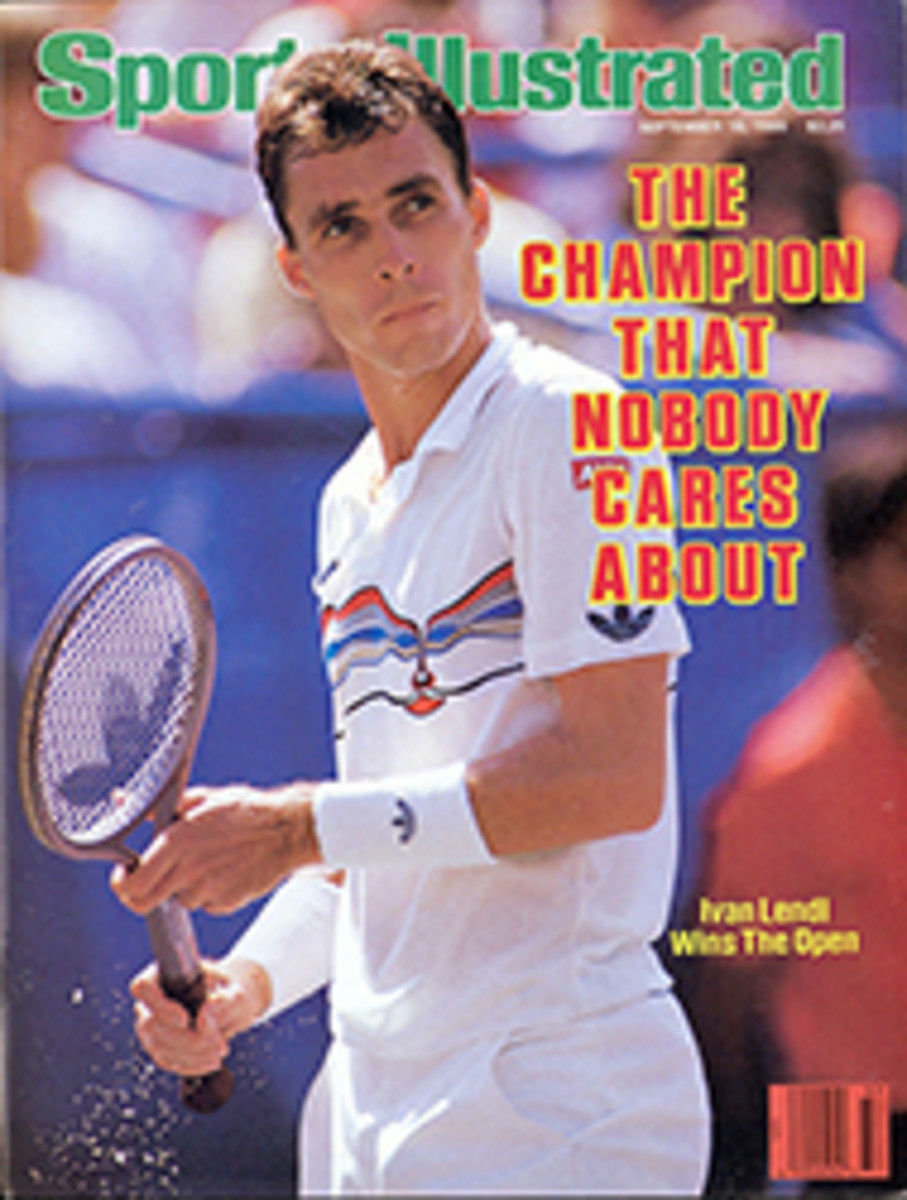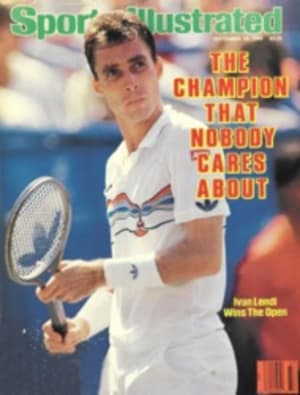
SCORECARD
JUDGMENT CALLS
How often we're reminded that the NCAA can be zealous to a fault. Last week it was giving the Nebraska football team a hard time over the improper but rather innocuous distribution of complimentary tickets (page 65) and was said to be looking into the possibility that Alabama football players broke NCAA regulations by flying a team charter to the funeral of the Tide's Willie Ryles. How could the NCAA even think of looking for a violation in Alabama's actions? "Transportation to a funeral is not one of the permissible expenses an institution can provide a student-athlete," explained an NCAA source.
Then there's the case of St. John's basketball player Marco Baldi. Baldi has long been a member of the Simac club team in his native Italy and has apparently always abided by Italian amateur rules. It is not uncommon for Italian club teams to award scholarships to their athletes, but NCAA rules stipulate that only schools may grant and administer athletic scholarships. Simac paid Baldi's tuition in Italy and his tuition and board while he spent a year at a high school on Long Island. Simac also paid various transportation costs for Baldi on several occasions before he enrolled at St. John's. Major crimes? To the NCAA, yes. Last week it announced that it was banning Baldi for all of next season and the first four games of the 1987-88 season, and would not allow him to play again until he has repaid Simac the more than $11,000 it has spent on him.
"We're quite dismayed and upset," said St. John's athletic director Jack Kaiser. "We feel there were mitigating circumstances. The boy didn't know, at any time, that he was violating any rules. Ignorance of the law is no excuse, but rules in that system and our system are different, and that caused the violations." St. John's and Baldi will decide this week what course of action to take in response to the penalty.
In adjudicating the Baldi case the NCAA might have followed the example of the Eastern College Athletic Conference, which also governs St. John's basketball and looked into the situation. The ECAC did extensive background studies of the Italian club system before rendering a judgment on Baldi's future. The conference ultimately concluded that Baldi, a sophomore, should remain eligible, provided he first repay Simac $1,200 for travel expenses. That ruling seemed much more reasonable, but the NCAA ban supersedes it.
CZECH AND DOUBLE CZECH
The story that begins on page 32 of this issue credits a quartet of Czechoslovakian-born tennis players with "four-Czeching" the finals of the U.S. Open. We hereby promise you that that's the end. In the pages of SPORTS ILLUSTRATED there will be no more gratuitous plays on the word Czech, no matter what Lendl, Mecir, Navratilova, Mandlikova, Sukova, Srejber, Smid or any of the other Czech players do. We will never again have victorious Czechs cashed, losing Czechs bounced, an upset Czech off; nor will we have Czech ins, Czechouts or Czechups, not to mention Czechpoints, Czechmates or Czechered careers. Czechampions will never dance Czech to Czech in celebration, nor will defeated Czechs behave czhurlishly. In fact, we will keep all that in Czech.
We ask only that all other responsible publications join with us in this embargo. We will, of course, cross-Czech to see what sort of a response we get.
AN OWNER WHO'S SEMITOUGH
When Tom Welter says he doesn't want whining, uncooperative ballplayers on his team, he's not kidding. The 36-year-old owner-second baseman of the semipro Dubuque (Iowa) Pilots got so tired of his team's bratty behavior and poor play that earlier this summer, with five games left in the season, he fired every player except himself and manager-outfielder Jim Field. "You see that truck over there?" Welter said to the others, pointing to an old dumper parked outside John Petrakis Baseball Park. "I'm backing that truck up and you're done." The Pilots forfeited their five remaining games.
Apparently, no one ever sang Welter that old executioner's song about how you can't keep a manager and fire all the players. His players didn't have contracts, and he says he could do whatever he wanted with them—especially after they fought constantly and finished with a 17-25 record. "He kind of pulled the plug on us," sighed Dubuque utility man Brent Swan.
It's debatable whether all the Pilots actually deserved to be fired—Field himself says that they were "a good bunch of guys" who "maybe were a little spoiled"—but Welter wants a new, orderly team. He plans to rebuild with players brought in through newspaper want ads. "This town has a population of 65,000," says Welter. "You need only nine to play the game."
Unlike many of today's team owners, Welter seems to have found peace of mind. "I should have done this a couple of years ago," he says.
HOLE IN ONE, TWO, THREE...
The odds were approximately 10 million to 1 against Arnold Palmer plunking his tee shot in the same hole twice in a row last week. But there was Palmer on Wednesday, calmly pulling out his five-iron and—for the second straight day—acing the 187-yard 3rd hole at the Avenel course in Potomac, Md. Both holes in one came during pro-am play at the international Chrysler Cup team tournament. No touring pro had performed the feat before, and, as far as is known, only five other Americans ever have. "I'd like to take this hole home with me," said Palmer.
Actually, individual holes in one aren't that rare. Some 43,386 were reported in 1985, and Palmer himself has made 13. Amateur Norman Manley of Long Beach, Calif., is credited with the most aces (57), with Mancil Davis (47) and Art Wall (44) the pro leaders.
By last Friday morning, a stonemason was already erecting a monument to Palmer's accomplishment at the 3rd tee at Avenel. Canada's Al Balding paused to take note of this as he teed up. Pulling out the requisite five-iron, Balding launched his drive straight at the pin. The ball plopped onto the green, trickled 15 feet forward and—you guessed it—dropped into the cup. Par for the course, you might say.
HANK GREENBERG: 1911-1986
Hank Greenberg, the former Detroit Tiger star who died last week at the age of 75, was different from most major leaguers of his era. Although he was born to immigrant parents in New York, he grew up in a 16-room house in a pleasant section of the city and spent summers at his family's beach home. When baseball scouts tried to sign him straight out of high school, his father insisted he go to college first. Greenberg attended NYU briefly but in 1930 signed with the Tigers. He turned down a Yankee offer because he knew they already had a first baseman, a guy named Gehrig.
Young Greenberg was a big and clumsy six feet four, and he was Jewish. A Jew was a rarity in baseball, and an awkward Jew named Greenberg from New York City was a ripe target for the vicious riding so common then. Greenberg coped with it. He worked to improve both his hitting and fielding by hiring peanut vendors and parking attendants to practice with him in off-hours. It paid off. In 1934 he led the Tigers to their first pennant in a quarter of a century, and a year later, when Detroit won again, he earned the first of his two American League Most Valuable Player awards. Greenberg became a prodigious slugger: In 1937 he batted in 183 runs and in 1938 hit 58 homers. He won four American League home run titles in all and carried Detroit into four World Series.
Greenberg was 29 and at his peak when World War II began in Europe. He became the first baseball star to enter the service. Rising to the rank of captain in the Army Air Corps, Greenberg missed three full seasons and a major portion of two others, returning in time to hit the grand slam home run in the final game of 1945 that gave Detroit one more pennant, its last until 1968. But he had slowed badly. The Tigers sold him to Pittsburgh, where he played one final season—for a reported $100,000, at that time the largest salary ever paid to a major leaguer—before retiring at 36.
Greenberg moved in wealthy circles—his first wife was Caral Gimbel, the department store heiress—and he eventually worked in the front office for the Indians and White Sox for his close friend Bill Veeck. A friendly, dignified man, impeccably dressed, Greenberg would appear at this baseball affair or that one, always gracing them with his presence. He had a fine sense of appreciation and deserved the spot he earned in baseball's Hall of Fame.
FIGHT FIERCELY, NO. 1
Harvard, which celebrated its 350th birthday last week, was always ahead of its time. The Crimson rowed against Yale in 1852 in America's first intercollegiate sporting event and played what it claims was history's first "real" football game (i.e., one not using soccerlike rules) in 1874 against McGill. The school rolled up seven national football titles before 1920—though it's still waiting for an eighth.
Even Harvard's athletic scandals came and went early. In 1882, according to the book Crimson In Triumph, university president Charles W. Eliot established a faculty committee to oversee an athletic department that had been hiring "professional" coaches, scheduling too many games and permitting part-time students to play. Yet the school struggled to find a proper mix of sports and academics. "You haven't got a thing to say for Harvard athletics," one crew coach told the school when turning down a job offer in the early 1900s. "The alumni run the show, and everybody knows it. Under your system a coach doesn't stand a chance—he loses a few contests and he gets the ax."
The emphasis on winning has ebbed since then, along with big-time success. Harvard's last football Hall of Famer, Endicott Peabody, graduated in 1941. Its alltime record against Princeton in football is now 28-43-7. ("I don't know why," wrote Fitzgerald, a Princetonian, through his character Amory Blaine, "but I think of all Harvard men as sissies.") Against Yale, in what is still known as The Game east of the Hudson, the Crimson is 38-56-8.
Harvard's most renowned athletes of recent vintage have been punter-wide receiver Pat McInally ('75), who recently retired from the Bengals; pro baseball utilityman Mike Stenhouse ('79); ex-Hartford Whaler defenseman Mark Fusco ('83); and George Plimpton ('48), who has played with the Lions, Celtics and Bruins.
Altogether, Harvard has produced 58 national championship teams in six sports and will even more proudly quote you its number of times on NCAA probation: zero.
ILLUSTRATION
SAM Q. WEISSMAN
PHOTO
DICK RAPHAEL
McInally (right) was Harvard's finest receiver.
THEY SAID IT
•Hayden Fry, Iowa football coach, claiming quarterback Mark Vlasic has a stronger arm than last year's starter. Chuck Long: "He proves it every day in practice by overthrowing receivers."
•Pete Rose, when asked whom he would most like to be if he could be any player in baseball history: "Me."

